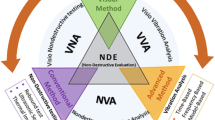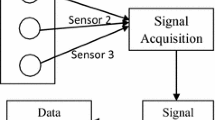Abstract
In practice, there are only a very limited number of experimental data available. Therefore, the prediction of material behaviour is difficult and a statistical analysis with a stochastic-based method is nearly impossible. In order to increase the number of tests based on experimental data, we apply the method of stochastic simulation based on time series analysis. The generated artificial data have the same stochastic behaviour as the experimental data. Advantages of artificial data are the arbitrary number of data available, and as a conclusion, the process of parameter identification can be statistically analysed. Here, we especially have experiments for adhesive materials for substantial tension tests performed at two different strain rates. Artificial data provide a stochastic proved analysis of the parameter identification concerning distribution and deviations. The analysis shows the possible range of the different material parameters and, therefore, gives a detailed view of the identification process.
Similar content being viewed by others
References
Austin M., Belbin L., Meyers J., Doherty M., Luoto M.: Evaluation of statistical models used for predicting plant species distributions: role of artificial data and theory. Ecol. Model. 199(2), 197–216 (2006)
Brockwell P., Davis R.: Time Series: Theory and Methods. Springer, Berlin (2009)
Chatfield C.: Inverse autocorrelations. J. R. Stat. Soc. Ser. A (Gen.) 142(3), 363–377 (1979)
Harth T., Schwan S., Lehn J., Kollmann F.: Identification of material parameters for inelastic constitutive models: statistical analysis and design of experiments. Int. J. Plast. 20(8–9), 1403–1440 (2004)
Hunniford T., Hickey R.: A simulated annealing technique for generating artificial data to assess concept learning algorithms. Intell. Data Anal. 3(3), 177–189 (1999)
Kolonko M.: Stochastische Simulation: Grundlagen, Algorithmen und Anwendungen. Vieweg+Teubner Verlag, Wiesbaden (2008)
Mahnken R.: Identification of material parameters for constitutive equations. In: Erwin, S., Borsh, R., Thomas, J. R. Hughes (eds.) Encyclopedia of Computational Mechanics, Chap 19, pp. 637–655. Wiley, New York (2004)
Mahnken R.: Simulation of strength difference coupled to softening in elasto-plasticity for adhesive materials. Int. J. Adhesion Adhesives 32(1), 1–14 (2012)
Mahnken, R., Hentrich, M.: On the combination of a UMAT-subroutine and cohesive elements for simulation of adhesive materials. In: Tagungsband der 17. Deutschsprachige ABAQUS-Benutzerkonferenz (Sept. 19–20 2005)
Mahnken R., Schlimmer M.: Simulation of strength difference in elasto-plasticity for adhesive materials. Int. J. Numer. Methods Eng. 63(10), 1461–1477 (2005)
Press W.: Numerical recipes: the art of scientific computing. Cambridge University Press, Cambridge (2007)
Schlittgen R.: Einführung in die Statistik. Oldenbourg Wissenschaftsverlag, München (2003)
Schlittgen R., Streitberg B.: Zeitreihenanalyse. Oldenbourg Wissenschaftsverlag, München (2001)
Schwan, S.: Identifikation der Parameter inelastischer Werkstoffmodelle: Statistische Analyse und Versuchsplanung. Dissertation, TU Darmstadt (2000)
Stralkowski C., Wu S., Devor R.: Charts for the interpretation and estimation of the second order autoregressive model. Technometrics 12(3), 669–685 (1970)
Stralkowski C., Wu S., Devor R.: Charts for the interpretation and estimation of the second order moving average and mixed first order autoregressive-moving average models. Technometrics 16(2), 275–285 (1974)
Author information
Authors and Affiliations
Corresponding author
Rights and permissions
About this article
Cite this article
Nörenberg, N., Mahnken, R. A stochastic model for parameter identification of adhesive materials. Arch Appl Mech 83, 367–378 (2013). https://doi.org/10.1007/s00419-012-0684-7
Received:
Accepted:
Published:
Issue Date:
DOI: https://doi.org/10.1007/s00419-012-0684-7




